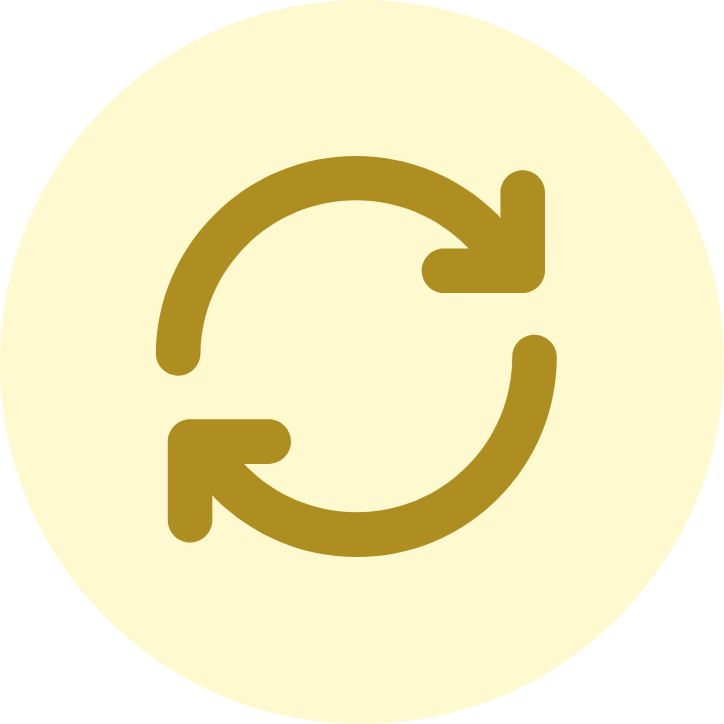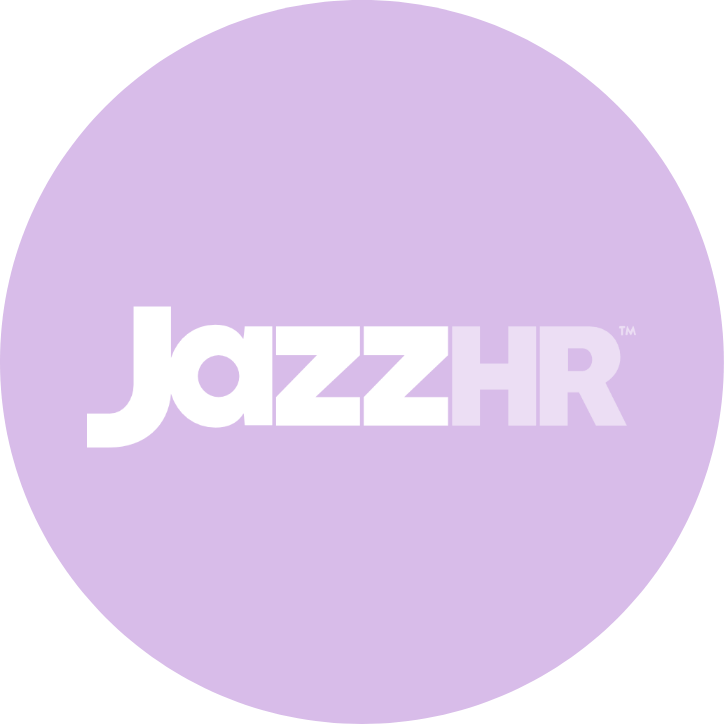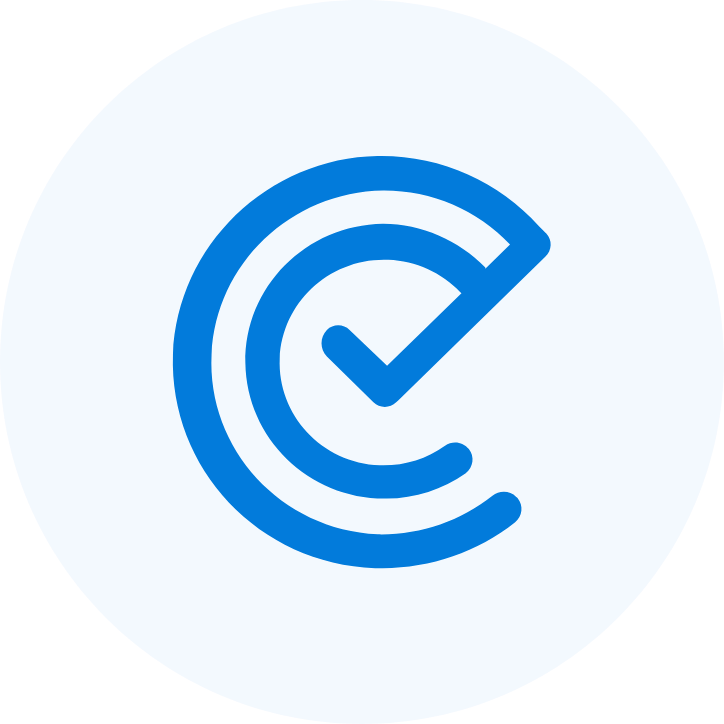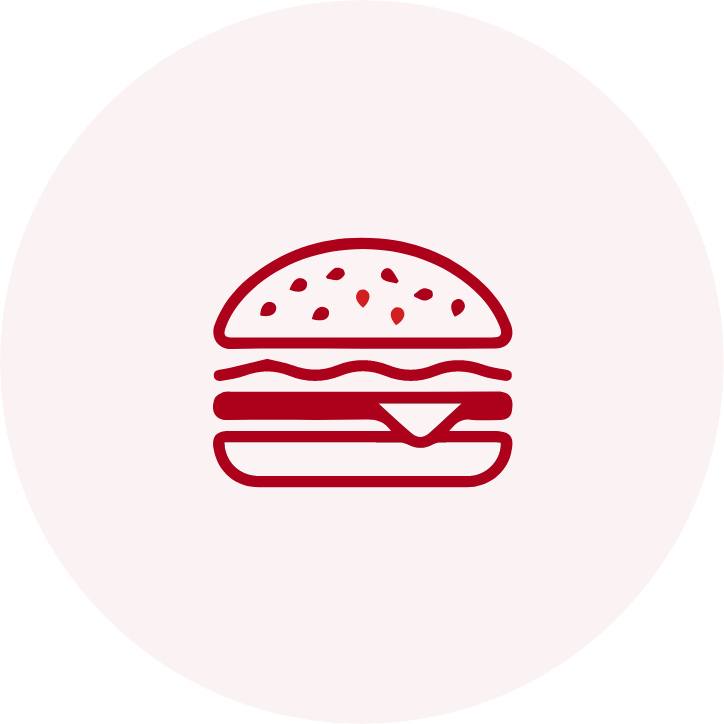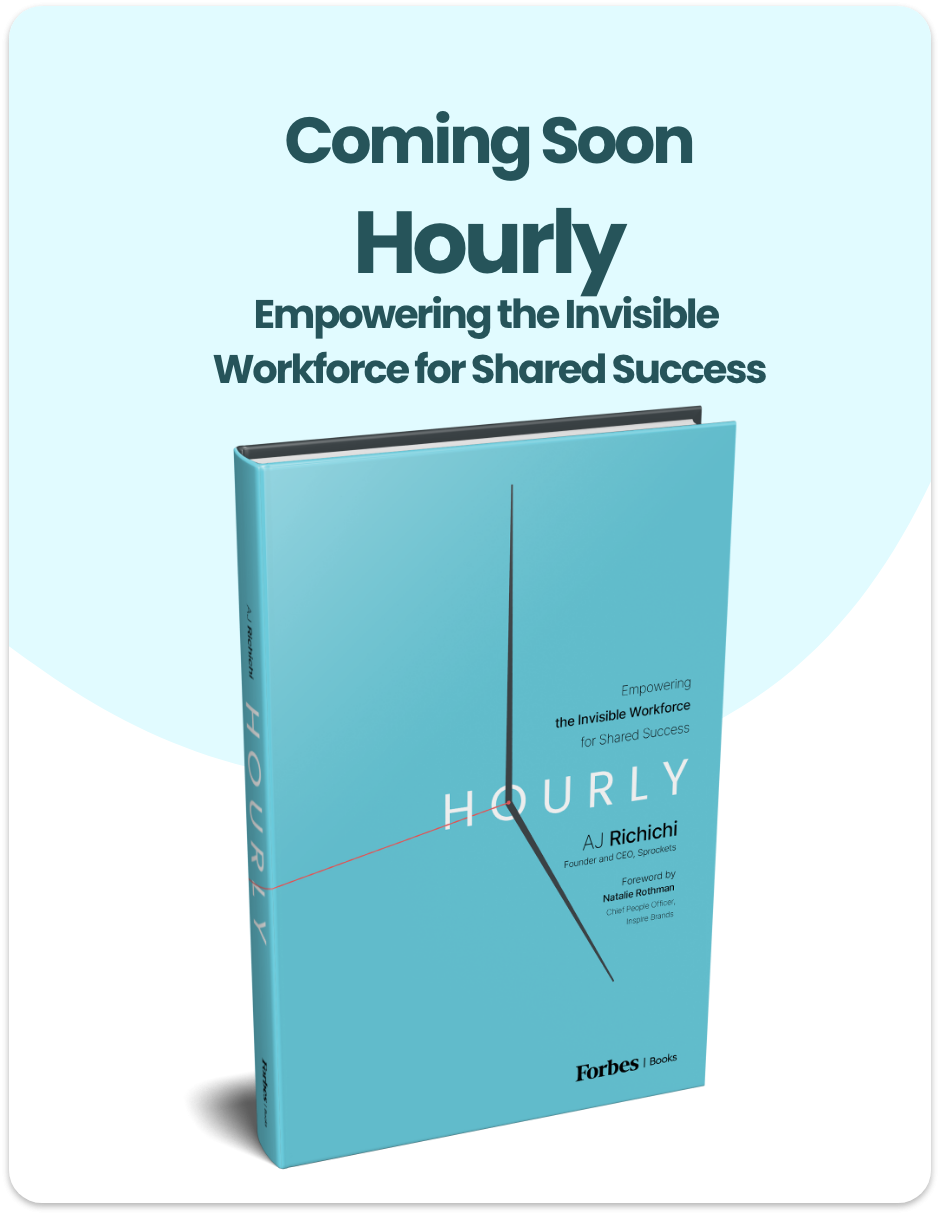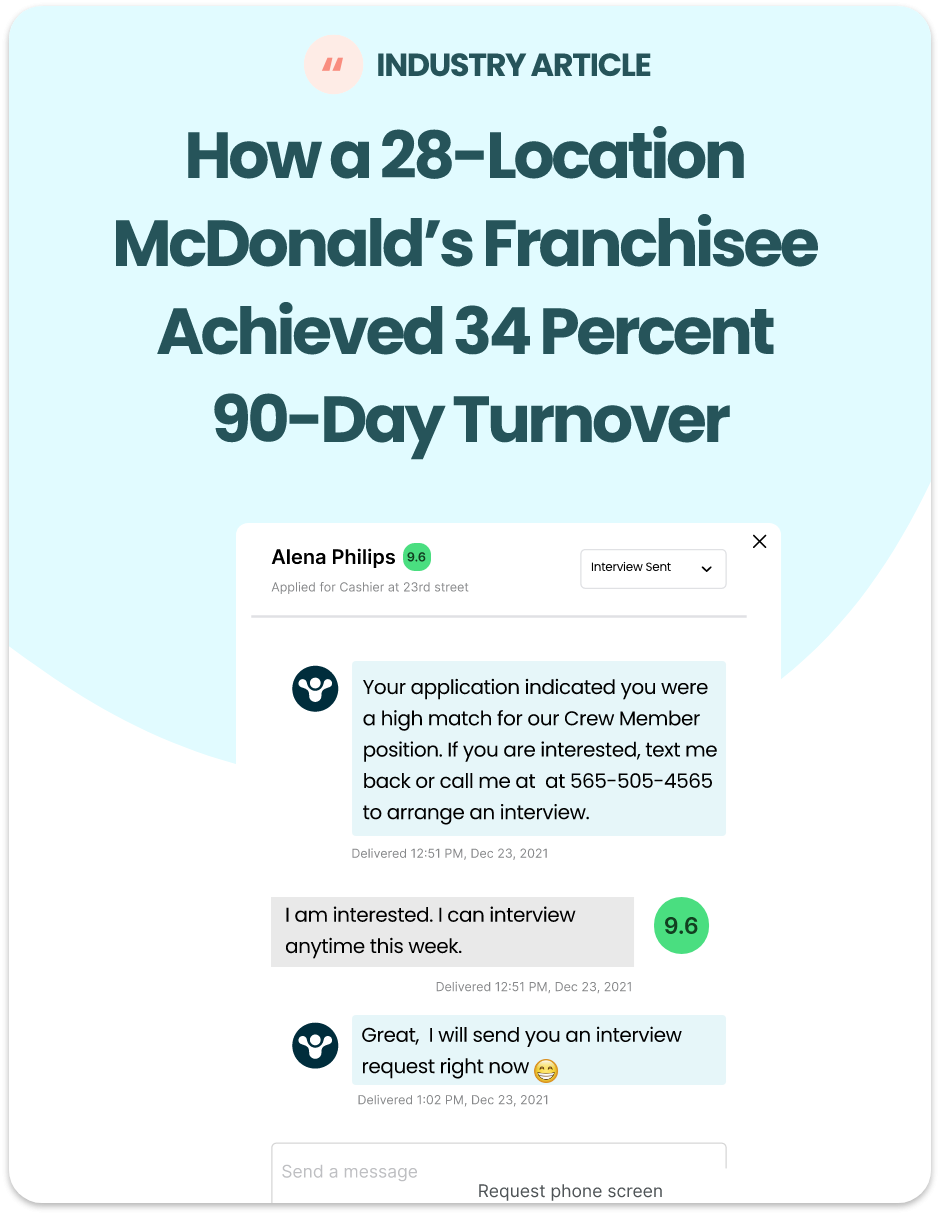Check out our third podcast episode of Talent Talk with our guest, Katharine Corona, who discusses the challenges and solutions she has managed during hiring sprees and growth periods at a company. Katharine is the Head of Human Resources at Visiture, a Charleston-based eCommerce Marketing Agency.
Chad | Sprockets:
Good morning and thank you for joining us with another episode of Talent Talk. Uh, today we have Katharine Corona in from Visiture, uh, she is the Head of Human Resources there and is going to talk to us a little bit more about, uh, how to manage, uh, hiring sprees or managed situations where you have a lot of applicants coming in for a particular position or you have a lot of different positions to fill all at once. So Katharine, good morning and thank you for joining us. I’d love to learn a little bit more about you and let our audience hear a little bit more about your experience first before we start diving into the topic.
Katharine | Visiture:
Sure. I am the Head of HR for Visiture. Like you said, it’s a wonderful company downtown Charleston on King Street. I’ve been in HR for almost 20 years, which seems kind of incredible, but it’s wonderful. And I got my start actually in agency recruiting, which was more on the hourly healthcare side of things. For the past eight years, I’ve been in more startup recruiting for a few different software companies and now for Visiture, which is an eCommerce digital marketing agency.
Chad | Sprockets:
Nice. The company that you’re with now is, as I said earlier, near and dear to my heart from a marketing standpoint. I think it’s a very interesting product, so I’d love to learn more about that at another time. But for today, definitely want to get some of your experience there. I definitely know our audience wants to hear a little bit more about your experience in regards to anytime that you’ve been involved with having a lot of applicants and we, we have clients that run into this, especially in the hospitality space. Sure. Um, that gets a high number of applicants when it said, especially seasonal. So we’ve got a place called Max Seafood out of Cape Cod and, of course, that’s very seasonal. The Cape is always a very seasonal business. But we also have a lot of folks that have multiple positions to hire all at the same time. And usually, it’s either the owner handling things or a hiring manager, they don’t always have the benefit of having somebody like yourself to help manage the process. So would love to just start picking your brain about tips, tricks, advice for anybody that’s finding themselves in those situations.
Katharine | Visiture:
Yeah. Happy to help.
Chad | Sprockets:
Alright, what are your thoughts around getting a ton of applicants for a particular position? Um, what should the hiring process look like, to manage that effectively?
Katharine | Visiture:
Well, the first thing is to make sure you’re hiring for the right position. Okay. Now you got to understand what are you trying to solve with that hire. Sometimes people get ahead of themselves and just want to throw bodies at a problem. But really you want to understand what’s the need we’re trying to fill first. Once you have a clear idea of what you want, why you want it, when you want it, then you kind of post it or start, you know, referring people to it. But when you start getting, you know, 20, 50, 100 people applying just to one job and you have 10 jobs, that’s a lot of applicants coming in. So identifying what’s the critical thing out of those 10 jobs, what are the three top ones you want to fill first and then start from there. So for me, I live by my calendar.
Katharine | Visiture:
I really physically will block off 8 AM to 10 AM focusing just on this one job, 10 AM to 12 PM focusing just on this one job. And I have to go through each applicant, each resume, all of that. But if you put it off, you just get buried in it. So you want to touch it every single day if you can. If you don’t have someone in-house helping you, that’s going to be a lot of work for the CEO or the owner to do it. But the most critical thing is to get the right person in the door. So having a system, whether it’s your calendar or whether it’s two days of the week where you’re just focused on recruiting, you’ve got to do it every single day or every single week to make sure you’re staying on top of those candidates coming in.
Chad | Sprockets:
And would you advise against or for the scenarios where, you know, you open up the job, you figured out, okay, this is exactly what I’m looking for. You’ve opened up the job and reviewing applications kind of at the end of the day as they come in and in batches or doing it kind of all at once. What are the pros and cons there?
Katharine | Visiture:
That’s a personal thing for sure. There are certain days when I like to do it first thing in the morning while I’m really fresh and I can really read through every cover letter and resume with a fine-tooth comb and really dig in. If I can’t do that, then I’ll put it off until the next day when I know I can. Because you don’t want to be screening resumes and candidates when you’re already fried. You want to be able to give these people your attention, they’re trying to work for you and get a job. So it’s really important that you kind of give everyone as much time as you can, even on paper, before you even talk to them to make sure you want to spend the time getting them through your interview process. So I’ve done it both ways, where I touch it every now and then, but I’ve found for me, I’ve got to have it on my calendar blocked off so it does not get neglected. I’m really like it’s an unmovable thing. It’s a lot for me. It’s a meeting that I don’t double book. Yeah. So like 8:00 AM, 10:00 AM whatever it is. Like you can’t talk to me then because I’m really focusing on recruiting right now.
Chad | Sprockets:
That makes good sense. I would think from that scenario, doing it in a big batch, you’re in the same kind of frame of mind and kind of giving everybody maybe a more fair shake. I could see myself doing it, onesy twosy and my mood could even affect things like, oh, I’ve had a long day. Like I’m not really paying attention as much. Things like that.
Katharine | Visiture:
If you’re not in the mood, it’s not going to go well. Like I don’t want to talk to anyone right now. Look at this. It’s not going to go well. So do it when you know you’re fresh. When you know you can be uninterrupted for a couple of hours and just knock it out. But if you do it just new as they come in, you’re going to kind of have ADD, you’re not gonna be able to focus as well on each single application that I just, I recommend blocking it off and only doing that at one time.
Chad | Sprockets:
Okay. Um, and I’m not gonna say that this is a good practice, but I’ll ask the question. Okay. Is there anything that you do to kind of, maybe I’ll put it in the category of like instant weed outs, like the help to bring that application pool down from a hundred to something that you’ll be thoughtful about. So what are some of those tactics that you take to help weed out? I know that might be position-specific but going to lay some examples out.
Katharine | Visiture:
It is, it is specific to a certain role, but across the board, there are general guidelines that I expect every single person who applies to Visiture to adhere to. Okay. Number one is did you read the posting? Did you actually read the job you’re applying for? Because I’m pretty clear about what we’re asking for: the requirements, the expectations, even the soft skills. These are kind of baked into the job description. So it clearly says so. If you’re interested, apply with this as your subject line and mention one or two things about yourself or with a cover letter. And people who apply and don’t have anything in the subject line. Do not have a cover letter, misspelled my name, apply for the wrong job. If you already have open, there’s an automatic rule outs. They didn’t take the time to read it seriously, which means to me they don’t really want this job. People who do their homework, who do their research, who find some little nugget they can pull from the website, just tell me and show me, hey, I did research you and I really want to work there. They go automatically to the top of my list. Perfect. Yeah. Typos still matter. Attention to detail. All of that stuff matters a lot before you even possibly get a phone call.
Chad | Sprockets:
And that’s it. So funny. This is going to be the fourth or fifth podcast at this point that I’ve heard something that really leans into showing that you care and being conscientious as one of those major areas where it can make or break you at any stage. In-person, on paper, or whatever the case may be. And I know it falls under the cliché of, you can only make a good impression once, so you’ve got one chance at it or put your best foot forward, all that fun stuff.
Katharine | Visiture:
But that’s true for a reason. And that cliché, it’s true. Your first impression, make it a really good one, and take the time to do it right.
Chad | Sprockets:
Absolutely. And that goes across the board with all types of jobs from hourly workers to c-suite, you’re all doing that in some way. And it’s such an easy thing to control as an applicant. And it’s an easy thing to use to weed out as somebody, as a hiring manager. So I think that makes good sense. I had another one in there. I love your thoughts on this because this happened to me multiple times in my career. Uh, being in a company that does have multiple positions open, seeing the same applicant apply for multiple jobs, how does that make you feel?
Katharine | Visiture:
That’s a red flag. That means they don’t know what they want. It’s really obvious when someone is running away from something or running towards something in a job. So you can tell that usually by a cover letter or by their tone and their emails. And I’m trying to get your attention if someone’s already coming across as, no, I’m desperate to be there. We want eager – but not desperate. So you want someone to in your mind, very fine line. Yeah. So you want to understand, you know, why do you want to come to Visiture, you know, for example, why us and not any other marketing agency? Like, why are you coming to us? And that sounds kind of, I don’t know how it sounds, but it’s true. Like you want someone who really wants to be only at your company, not just any old company who does a similar service. Why do you want to come here?
Chad | Sprockets:
And one that’s important when we think about the time invested not only in hiring, but in the employee, once they’re onboarded, like no matter what your experience was beforehand during the onboarding process, you’re going to learn more about how we do it here, how you apply your knowledge here. So there’s a lot of training involved and you don’t want to lose somebody because they’re not committed to your establishment. So, no, it makes good sense. And that’s the way I’ve always felt about it. But I’ve never directly asked somebody on that talent acquisition side. Like, how, how should I take this? I never took it as they’re really eager. I took it more as what you said, uh, that they didn’t really know. They are just like, Hey, I’m just trying to get a job.
And I would say that there was, there was one person that I did hire that did conduct themselves like when I had a couple of marketing positions open. They applied for a few. I spoke with them and Connor had the skill sets for something more specific that I did need. So I did hire him. Um, and he did a great job, but he didn’t stay. And that was one of those things. Then, he saw the next shiny object and then was gone. He did good work. He fit the skillset. But I kind of knew that going in. It’s like, you could be a flight risk, and he was.
Katharine | Visiture:
On the flip side, there’s one person that’s, you mentioned that that came to mind where there’s one person who has been trying to work at Visiture for a very long time. His interest is sincere. It’s keen. And I haven’t had a role for him yet, but as soon as I do have one open up, I’m going to go straight to that guy. His emails and his communication have been great from the very get-go. Just really want to be there. Like I really love what you’re doing. I love the team. So far that I’ve met with just informally, he kind of set it up as an informational interview and the past eight months he’s still been hanging onto his current job, but he’s like, I want to be with you guys. Yeah, that’s a different way to me. It’s not a red flag. I just like that this guy’s dying to be here and as soon as I get a job that fits his skills, I’m going to call him up.
Chad | Sprockets:
Absolutely. Opportunistic hire for sure. And I mean, right. And you don’t have to worry about sourcing at that point. It makes your life a little easier.
Katharine | Visiture:
Right. I can’t wait to have that job. Exactly. That guy.
Chad | Sprockets:
I’ve been fortunate enough to be in those positions as well. Yet a lot of that has been typically internal hires for me though, like somebody wanting to come, come over from the customer success side or move up from, you know, what it was always our farm league, the SDR role, I mean it, which is a great way to break into software companies. But uh, then also a place where the folks like us can see talents, see that potential and then move them in different places. Yeah. Um, well that’s really interesting. Um, now for me thinking about, um, these multiple positions, uh, and the priority there and um, cause that was something you mentioned at the beginning and let’s say we had 10 job openings. Yeah. How do you prioritize? So talk to us a little bit more about what factors go into your prioritization now. I’ll have a few more questions after that. Just being in that position as well. But ultimately what kind of, helps you stack rank?
Katharine | Visiture:
Absolutely, and I do. That’s exactly what I do. I stack rank them. Um, so if I have, if I have more than say, seven jobs open at one time, which is frequent, I have that a lot. Wow. Um, I have, I prioritize based on what’s most critical in terms of there’s no one doing that job right now and no one can cover the slack while I try to find somebody. That it’s a new head versus just an additional head, that’s a different kind of hire. Um, let’s say, you know, we just launched a new service line, and no one’s able to really act as a CSM for it or client to test manager for it. That’s going to be a critical hire because we have deals that are closing that need to be handled by that person. But that’s going to trump, you know, take rank over an additional um, SDR when you already have a team of them in place.
Katharine | Visiture:
Also, the other piece of that is whatever hire takes the longest to find. There are certain roles that just take you exponentially more weeks, months even defined versus my other roles. So on the tech side, you know, it’s really, really, really hard to find someone. You have a senior developer with eight years of this and this, you know, very, very specific skill set with this one platform that no one else has, that role will take a lot longer to fill. That’s going to be a priority as well. That’s based on how hard the role is to fill, meaning how long does it take, and then is it a new role that no one’s filling so no one else can cover for me while I find it, it always took the top two spots from there, it’s going to be the business need for it. Is there a true case for that? Like, do we really need this role right now? If it’s not imminent, we can’t do business without this role in the next few months. That gets up there too. If it’s kind of like, that’s nice to have, we could really have an extra person helping out the marketing team that might get a little pushback.
Chad | Sprockets:
No, that makes perfect sense. Cause I definitely have been in an area before with being over sales and marketing teams and being in high growth organizations where, fortunately, we were marketing-led and then sales fulfilled. I was the head of demand generation. We would have the scenarios with our talent team where it’s like, I’m of course as a hiring manager, we’re going to be sitting for all of my positions to be number one. Just like somebody coming in from customer success with, “Hey, we’ve got way more accounts per CSM than is safe.” We’re going to, you know, increase churn, all that kind of good stuff. I’ve been in other scenarios where the talent team doesn’t speak the same way that you’re speaking this morning, where it is about the prioritization is what I got in first. But it is more what does the business need? Like what is going to stop us from writing business? What is going to compromise the integrity of our customer service? So on and so forth. And that I think is the best way to look at it. Whereas other organizations I’ve seen that kind of muscling in of, well I’m more senior and I need this and I’m pushing this in and that doesn’t seem like a good way to do it.
Katharine | Visiture:
It’s not. And I encourage anyone who is in talent acquisition to push back on that. If everyone’s going to be in a line at your door saying “my job, my job, my job”, they all want their jobs filled yesterday. Yeah. That’s kind of like, take a number and I’ll get to it. That doesn’t work either. It’s really, you know, understanding why you’re hiring when you need it. And is it a business need or is it nice to have. And I want every person who works in talent acquisition to ask those questions and not be scared to push back on someone saying, do we really need that right now? What’s going to happen if we don’t fill it in two months? What would happen if we don’t have it in six months? Is there anyone else who can help you with that until I can get to it? That’s valid. Because you want to spend the time getting the right people in the door. You don’t want to hire fast. That’s a big mistake. You do not want to hire fast. You want to hire carefully.
Chad | Sprockets:
Yeah, I love that. Don’t want to hire fast. Want to hire carefully. Yeah. And that is so important because of course, they’re not my side of the table here with what Sprockets does, and for the shameless plug real quick, what we’re doing is trying to reduce employee turnover and reduced time to hire. But the way that we’re doing it is by helping you understand what you know, what are your best people comprised of from a personality standpoint, not a hard skill standpoint. Um, so soft skills and then benchmarking all applicants as they come in. With that, it is about hiring carefully, not hiring fast. We want to make sure it’s who matches the culture for your business matches what job needs and on something that you can’t check off on a piece of paper, that sort of stuff.
What we’re finding is those that are going through that process and using that system to have that extra data point to go, okay, this is how much these people match. The folks that are already in and that haven’t left, that are top performers that are doing well like that want to be here. Um, and that’s, that’s been something good for our clients. Of course, they feel like this is a safe hire. You know, this is somebody I can feel good about. They’re going to stick with me, be an engaged employee, all that kind of good stuff.
Katharine | Visiture:
It’s always a risk when you hire anyone. Even if you go through an incredible vetting process, which we do, there’s still kind of always that like, oh gosh, please work out the way I want you to work out. Yeah. And you’ll know in the first, really the first 30 days you’ll know that’s a good fit. But to have that extra boost of confidence that you guys are getting through this is really, really nice.
Chad | Sprockets:
It is. Over my career, I’ve had the opportunity to hire everything from hourly workers to being involved in c-suite level positions being hired. It’s one of those things that I believe now and I’ll take it, I’ll take it for a second beyond interviewing. I think people in general are pretty good at hiding crazy for a little while. So, and I mean, anybody can kind of keep that in an interview and I also believe some people are just really good at interviews. You get done and you’re like, I really enjoyed my time with that person. Yeah, well that’s great. And maybe you would enjoy having a drink with them, but are they right for your business? Do you want to work with him? And how much was that their authentic self?
And it’s tough. The resume you have to even be worried about – is this an authentic level for the person? So I love any sort of behavioral questions that help that I think make it tougher to hide the crazy or tougher to hide the personality. I shouldn’t just keep saying crazy. That’s me. More joking than anything else. But yeah, just hiding like you know, it’s like, because anybody can say yes, of course I’m a great team player. I love collaboration. You know the best ideas float to the top kind of thing. And then ask them a few behavioral questions and start to hear like maybe that’s not entirely true, that’s what you can say, but maybe that’s not how you act.
Katharine | Visiture:
Right. Give me an example of that. Tell me about a time when you actually, you know, did that in reality.
Chad | Sprockets:
Exactly, exactly. And then yeah, like you said, the first 30 days you’ll find that out. And I mean that’s the tough part though. You want to avoid anybody leaving within that 30 day point. You’re like, wow, we messed up. Right. That’s the worst. They’ve gotten a bunch of free lunches out of you and that kind of thing and then now it’s time to leave again. That’s like a higher smart, fire fast. I think the fire fast part is interesting as well to kind of go into that part of the conversation. I know we’re talking about having a lot of positions, having a lot of applicants and we think about speed on that side and it’s like I need a body, I literally need a cook or I literally need a CSM right now.
But I’m not always thinking about the folks that, you know, I think there’s always some rejiggering going on in the stack ranking of a team of employees once they’re in, but not enough of the rotation and out of the bottom kind of thing. And like bringing not additional heads in, but kind of refreshing teams. And being okay with getting rid of a bottom performer that is adequate. But tell me what your thoughts are on this. Cause I did this with my SDRs and then definitely did this with a, whenever I had like content teams that were bigger, um, is some more entry-level positions. I always felt like I had one to two rock stars, a couple of middle of the road B players, and then folks that were about to be on a get-well plan or something.
Chad | Sprockets:
And they were hitting their goals or almost hitting their goals or not enough to where it’s like, oh, I need to get rid of you. You’re not completely failing but you’re not as good as everybody else. So I started to actually let those folks go, let the bottom go to then make room to add new, to try to find that next rockstar. Cause I was also always having them pushed out at the top. If they were really good, they’ll go, they’ll either go somewhere else or they’re gonna move up. I’m going to give them more responsibilities. So when you think about firing fast, um, what are your, I guess my thought was like you don’t have to be a failure to be fired, you know, so how do you feel?
Katharine | Visiture:
Yeah, no, I’m with you there. Okay. I think it takes a little while to know if someone’s not A or B level, if you will. And you do. The thing is you don’t want everyone to be rock stars. Like I believe in actually having a pretty diverse team of skillset, personalities, ability, but you want to have strong A players. Yes, you want to have a lot of B players, but it would be at, it’s, I mean the workhorses people roll up their sleeves are not scared of we’ll just do whatever it takes. You want a lot of those people and yet they’re going to be the ones who want to move up as well. I guess tricky when you’re smaller integral because everyone wants to come in and move up pretty quickly and you’ve got to scale it in a way that makes sense where you can make room up top but not have it be all top-heavy and no one at the bottom.
So it takes time to kind of grow the company. Yeah. For the ones who come in and just are either getting it, you know, fast enough or they’re not really into it. And you can tell again from the first 30, 60, 90 days if someone’s really invested in wanting to learn and being very proactive. If they’re not, I always encourage my managers to get ahead of that pretty quickly. So I’ll do a 30, 60, 90-day check-in myself and have the managers do it as well as to make sure, hey, is this what you thought the role was going to be? Is this what we sold to you? Are you doing what you expected? And if not, let’s go ahead and try to course correct now before it becomes a problem. Okay. You can’t course correct, then that’s when you want to go ahead and have that conversation a little earlier of like, hey, before you get here for like six months, maybe this isn’t the right place.
Katharine | Visiture:
Like are you happy here? Do you want to be here? Like what are you not getting here? Cause usually if someone’s not performing well, they’re probably not very happy. Like it’s hard to come to your job when you know that you’re stuck, yet that’s really hard to be like, oh, I’m not performing well. Like I’m not getting it. Like go ahead and talk about those things. It’s not bad to say I’m not getting it. I’d rather someone would come to me and say, I don’t know what I’m doing. Like, help me. Yes, great. Okay, let’s, let’s figure it out together. And if you can’t figure it out, then you want to say, Hey, you know what? I’m so sorry, we did our best. But to help you transition out gracefully.
Chad | Sprockets:
Yeah. No. And I think that’s a great perspective that um, yeah, that should be taken on things. Uh, the 30, 60, 90 days is big. And again, across all positions just to check-in. We hire somebody. We sold each other, we both believe in it and then we hit the ground, and then it becomes, we’ve got to do work. And it’s like, yes we do, but we are still kind of in that process of hiring, even if the paperwork had already been signed. Yes. So I think that’s a great message. Um, and something that doesn’t happen enough. I think a lot of hiring managers come in and it’s like, finally, I’ve got somebody sitting in that chair. That means work is getting done. So that means I don’t have to worry about anything.
Katharine | Visiture:
Oh, right. That’s such a huge mistake a lot of people make where it’s like, great, we filled that role now that’s done. It’s not, that’s just the first step. So just like the interview process, you know, you put your best face forward, you do all of that, you get the job, great, well done. And then the real fun starts. We actually have to do the job. So it’s like, okay, those first 90 days, that’s really a working interview still. Like, you know, proving that we made the right decision by hiring you.
Chad | Sprockets:
Absolutely. Yeah. That’s good advice. For anybody listening on both sides of the table, the interviewer and interviewee, the interview is not over. I guess you could take it at any point. You’re only as popular as your success kind of thing. Are you doing a good job? But particularly in those 90 days, that’s where, you know, the course correction can happen. Um, and then also for hiring managers, not to be afraid to fire. I think folks are, especially in an economy right now with a low unemployment rate. I think people might even be in, I’m projecting here scared to fire, you know, I know I’ve been in markets before where I had trouble recruiting say SDRs. Which is a tough role to begin with. Um, cold calling is not necessarily what everybody wants to do. Um, it is really hard, but it’s a great place to start and expand your skill set, so on and so forth. Um, but I had a lot of trouble in a particular marketplace hiring there. Um, and this was in Providence, Rhode Island. So many people went to Boston. So I was just struggling to hire, so then I also struggled with wanting to let people go. It’s like, well, like my breaking even, and I honestly would, there was a couple that I’d have been just fine. It wouldn’t have killed our operating plan. It wouldn’t have killed like my numbers or something like that. But I got, I got into this too scared to fire. Yep. And, uh, so, but your advice is I’d be quite the opposite. It sounds like it would be right. Be bolder in that area.
Katharine | Visiture:
Yeah. Don’t be scared to do it. I mean, it’s going to hurt you in the long run if you have someone who’s not really helping you move forward.
Chad | Sprockets:
Absolutely. Okay. Well, just checking in on our time here. I know we’re getting closer to the end of our podcast, but wanted to just kind of be open here in terms of any advice, knowing that the folks that are listening right now are hiring a lot of applicants, have multiple positions, have the same struggles that honestly every company has when it comes to hiring. Any general advice that you want to give out to anybody listening right now? Like, hey, or just commiserate even for a moment? Like it’s going to be okay. I promise. Don’t be alarmed. But, uh, knowing that we have again, clients that are like, I just, I need somebody dependable and I need them right now. Um, any advice for them? Just in terms of managing their own process and managing their own expectations, but then also knowing when they’ve got what they’re looking for? Um, any thoughts there?
Katharine | Visiture:
Yeah, so I mean really, again, figuring out who you want and why. I get a really clear, even an image in your head of like, what’s the ideal candidate and try your best and not sway from that. Because you get nervous. You get scared of like, oh shoot, I’m not going to hit my deadline. We’re gonna miss our numbers. We’re going to have Yada, Yada, Yada, Yada, Yada. Try not to do a knee-jerk hire where it’s like they’re good enough. Sure, let’s do it. Or good. No, like I’m telling you, like train them on the floor. Right, right. That’s, that will not work in the long run. So just take a deep breath, slow down, hire carefully, hire smart, make sure the entire team is bought into that hire. Like, don’t let one person make a decision about who to hire either. So you want to have as many people, I mean not 15 people, but you want to have anyone who’s going to work very closely with that person.
Katharine | Visiture:
You want their say as well in terms of “do I want to work with that person and why”? You want to have a little bit of input from everybody who’s going to be very close with that person. But again, make sure it’s, you understand who, what and why and then try our best to take it slowly, carefully do your due diligence, do your background checks, you know, talk to people who worked with that person. Don’t go based on just your gut instinct of like they’re really nice, they’re really easy to talk to. They must be a good person. I have a great feeling about them. Yeah, they’re gonna work out. They seem great that that could be true. But just take your time to make sure you talked to anybody else you can, just to get a little bit more insight and tell about how they really performed when things got tight. Like how would they handle stress when you had no help? How did they step up or step out if you want to be able to get a sense of their actual past performance, because that’s usually a good indicator of what they’re going to do for you as well.
Chad | Sprockets:
That makes good sense to ask those kinds of questions. What do you do under stress? I know that I haven’t asked the question in all of my interviews and haven’t been asked in the interviews that I’ve been on the other side of the table. So, uh, that’s very, that’s really smart because stresses in every position, there’s nobody that gets to avoid that. Or if there is a job like that, I’d love to know what it is. I can only imagine as being a tour guide here in Charleston. That’s my retirement plan. As far as things go, Katharine, it has been fantastic to get the chance to sit down and talk with you. This was a lot of good information for the folks that I know, right now need that. They’re out there, you know, nuts. They are struggling with hiring, is probably a little extreme. It’s not an easy thing to do. Um, but you provided a lot of great insight today that people can take away. So I appreciate that. I hope to have you on again very soon cause this was very helpful for me as well and I’m sure for everybody else. So thank you again for joining Talent Talk. Hope you enjoyed today’s episode and we’ll see you for the next one soon.


